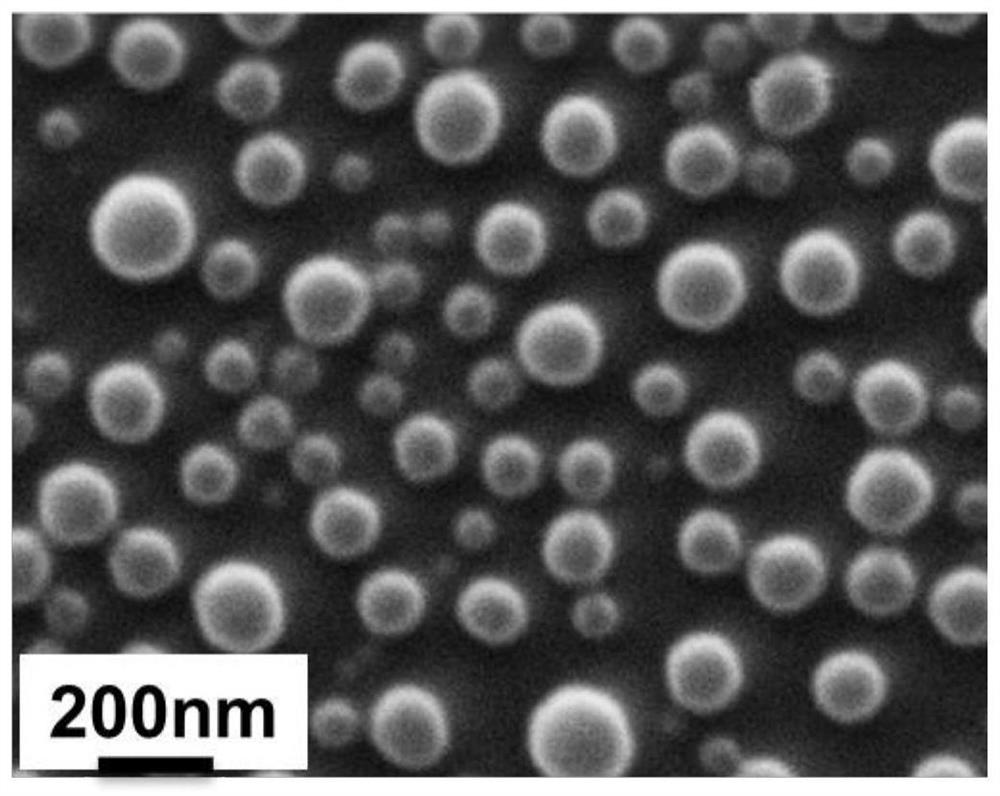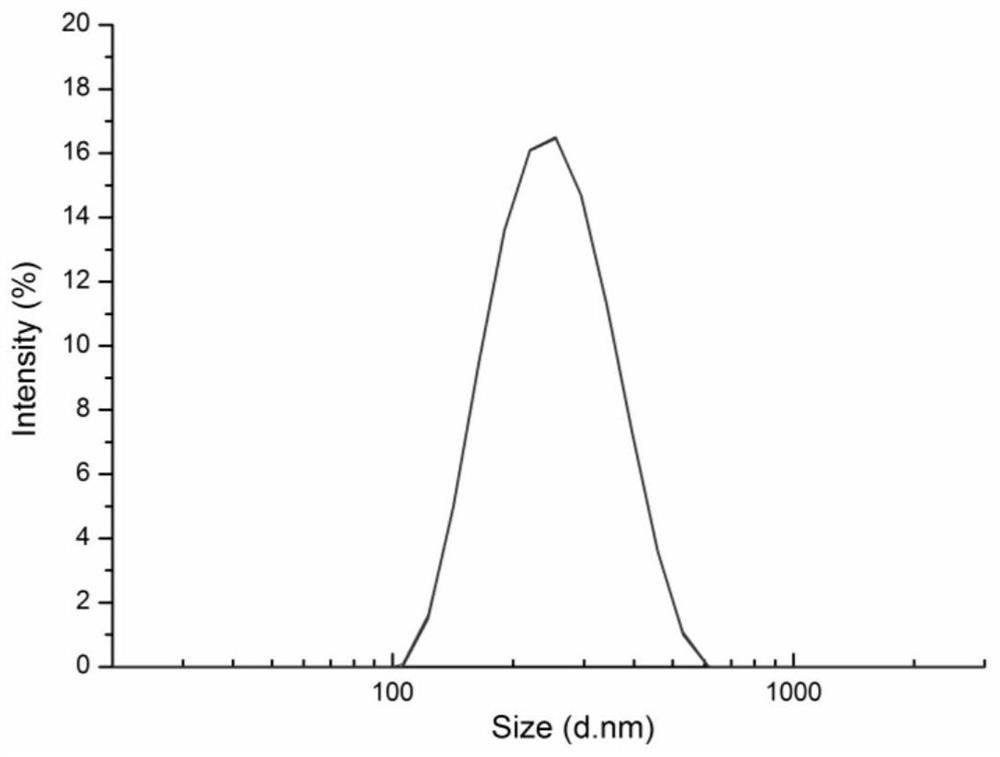A kind of polypeptide-based polyester ammonia nanoparticles and its preparation and application
A peptidyl polyester ammonia type, nanoparticle technology, applied in the field of biomedical materials, can solve the problems of unstable nanoparticle structure, can not be used for a long time, and the drug will explode, and achieve excellent biocompatibility, low cost, The effect of uniform particle size distribution
- Summary
- Abstract
- Description
- Claims
- Application Information
AI Technical Summary
Problems solved by technology
Method used
Image
Examples
Embodiment 1
[0056] 1. Preparation of Polypeptidyl Diamines
[0057] (1) Preparation of tripeptide:
[0058] Using standard FMOC solid-phase peptide synthesis (SPPS) technology, the material ratio involved in the reaction is as follows: 2-chlorotrityl chloride resin is 2g, 1.6mmol FMOC-Lys(Boc)-OH is 3.78g, 6.4mmol FMOC-Phe-OH was 2.48g, 6.4mmol FMOC-Leu-OH was 2.26g, 6.4mmol HBTU was 2.42g, 6.4mmol HOBt was 0.87g, 6.4mmol DIEA was 3ml, piperidine 5ml. Proceed as follows:
[0059] Add the resin to the peptide synthesis device, add dry DMF and soak for half an hour to make it fully swell, and finally discharge the solvent DMF.
[0060] Dissolve the amino acid with DMF, then transfer the solution to the peptide synthesis device containing the treated resin in the previous step, then add the catalyst DIEA, react at room temperature for 1.5h, make it fully fixed on the resin, and wash the resin with DMF .
[0061] Add the piperidine / DMF solution to the resin in the previous step to react f...
Embodiment 2
[0077] 1. Preparation of Polypeptidyl Diamines
[0078] (1) Preparation of tetrapeptide:
[0079] Using standard FMOC solid-phase peptide synthesis (SPPS) technology, the material ratio involved in the reaction is as follows: 2-chlorotrityl chloride resin is 2g, 1.6mmol FMOC-Lys(Boc)-OH is 3.78g, 6.4mmol FMOC-Phe-OH was 2.48g, 6.4mmol FMOC-Leu-OH was 2.26g, 6.4mmol HBTU was 2.42g, 6.4mmol HOBt was 0.87g, 6.4mmol DIEA was 3ml, piperidine 5ml. Proceed as follows:
[0080] Add the resin to the peptide synthesis device, add dry DMF and soak for half an hour to make it fully swell, and finally discharge the solvent DMF.
[0081] Dissolve the amino acid with DMF, then transfer the solution to the peptide synthesis device containing the treated resin in the previous step, then add the catalyst DIEA, react at room temperature for 1.5h, make it fully fixed on the resin, and wash the resin with DMF .
[0082] Add the piperidine / DMF solution to the resin in the previous step to react...
Embodiment 3
[0098] 1. Preparation of Polypeptidyl Diamines
[0099] (1) Preparation of tetrapeptide: The preparation method of tetrapeptide in Example 2 was used to prepare tetrapeptide.
[0100] (2) Preparation of ethanolamine protected by di-tert-butyl dicarbonate anhydride: Add ethanolamine (10.0ml, 165mmol) in anhydrous CH at -10°C 2 Cl 2 To the solution in (500 mL) was added triethylamine (24.5 mL, 250 mmol), followed by di-tert-butyl dicarbonate anhydride (36 g, 165 mmol). The solution was stirred at 25 °C for 20 h, then washed with saturated NHCl 4 The solution (100ml) was quenched. The aqueous layer was extracted with ethyl acetate (3 x 200ml). The combined organic layers were then washed with brine, MgSO 4 Drying and concentration under reduced pressure gave di-tert-butyl dicarbonate anhydride protected ethanolamine as a colorless oil.
[0101] (3) Reaction of tetrapeptide with phthalic anhydride and ethanolamine protected by di-tert-butyl dicarbonate anhydride: in the tetr...
PUM
| Property | Measurement | Unit |
|---|---|---|
| particle diameter | aaaaa | aaaaa |
Abstract
Description
Claims
Application Information
 Login to View More
Login to View More - R&D
- Intellectual Property
- Life Sciences
- Materials
- Tech Scout
- Unparalleled Data Quality
- Higher Quality Content
- 60% Fewer Hallucinations
Browse by: Latest US Patents, China's latest patents, Technical Efficacy Thesaurus, Application Domain, Technology Topic, Popular Technical Reports.
© 2025 PatSnap. All rights reserved.Legal|Privacy policy|Modern Slavery Act Transparency Statement|Sitemap|About US| Contact US: help@patsnap.com



